Tags
Amon, animation, Anime, Asami, Avatar, Avatar themes, cartoon, characters, Equalist, Korra, Korra themes, Republic City, season 1, The Legend of Korra, What is Korra about
So let me tell you about The Artifice, and no, this isn’t a non sequitur plug, and I’m not obligated to say this; I’ll be getting to why it’s relevant in a minute. The artifice is a website, made and maintained by its writers, which covers all aspects of media from literature and film, to anime and manga. It was recently brought to my attention that I can link my own articles there through there new Tides system, so I think I’ll be trying that out a bit.
But while I was looking at the site, I stumbled across one article about the way season one of Avatar: The Legend of Korra addresses “privilege”. I’ll link the article here but I’m not exactly responding it. The article talks about the themes behind the show; it’s about the things Korra addresses. What I’m more interested in is looking at how well Korra addresses those themes, from a story tellings perspective.
In the world of Avatar, a small percentage of people are born with the gift of “bending”; a mystical to control the elements. Fire Benders from the Fire Nation can throw plumes of flame from their fists and shoot lightning from their fingertips. Water Benders from the Southern and Northern Water Tribes can levitate and move water, and turn it to ice. Air Benders who live in Air Nomad Temples on the four corners of the earth can shift the winds and fly around with gliders. And Earth Benders of the Earth Kingdom can throw rocks. Sometimes even big rocks.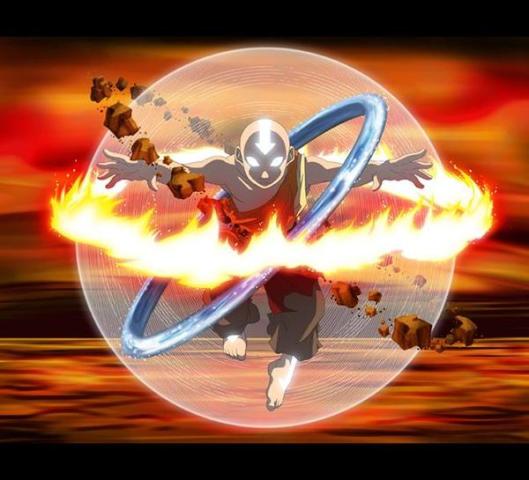
Obviously, bending is the coolest thing in the world, and that’s exactly what Korra, the latest incarnation of the Avatar, said when she walked into Republic City and ran into an anti-bending activist. Okay, some terms to explain here; skip ahead if you’ve watched the season. First, Avatar. Given that it’s the title of the show, you might think it’s important. Well, there is at any given time one person in the world capable of bending all four elements. This person is the Avatar, and it is their duty to maintain balance and harmony in the world.
Korra is the Avatar prime in Legend of Korra (le gasp), but before her, Avatar Aang helped found Republic City. It was intended to be a place where people or all nations and benders of all elements could live together, but then there were triads and stuff, and supposedly it’s all mostly good but the show focuses on some of the more underbelly parts of the city.
The dream of Republic City was for it to be a place of equality among nations. However, in it a new concern develops; the inequality between benders and non-benders. We are told that, within republic city, benders tend you reach higher social and economic status then non-benders. The show never goes into the details of why this is, but even if we completely exclude the possibility of discrimination, it does make sense simply in that bending can give a person more job opportunities.
In fact, the police force in Republic City is shown to be made up of primarily metal benders (an advanced Earth Bending technique), and I don’t think it’s hard to understand how potential bias, even in small doses, from the entirety of the most authoritative organization around could cause feelings of discrimination or even oppression. On the other side of the law, the city’s Bending Triads, gangs made up of benders, use their bending “muscle” to exploit and extort poor shop owners, typically non-benders who can’t fight back.
Because of this, Amon, a masked man with the power to take away people’s bending, is able to rally support for the Equalist movement to end bending once and for all.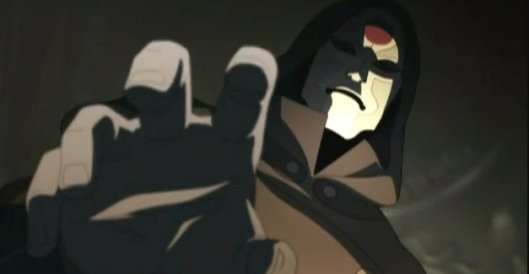
On a side note, wow! That is a cool set-up. The Avatar, master of all four elements, up against a man with the power to eliminate her abilities, with sociopolitical themes throughout. That’s great, and Korra’s immature disregard for the complaints from Equalists in the beginning make her the perfect protagonist here.
But as interesting as the political themes of this are, Legend of Korra doesn’t really convey them to the audience in the most effective ways. Quite the opposite; it seems to try its damnedest to not have the audience recognize the concerns of the Equalists.
I’m a big fan of show-don’t-tell in stories, and judging by Avatar’s usually great writing, I think it agrees. So what are we shown of the inequality in Republic City? Well, we have a scene where some Bending Triad jerks are extorting a shop owner for protection money. And that’s about it. Until much later in the series, when the war between the city and the Equalists has gotten out of control and unfair curfews are imposed, that’s all we get in terms of showing. At least on that side of things.
Meanwhile, around the main characters, the people in the show the audience should feel closest too and thus the best catalysts for expressing thematic elements of the show, not only do we not get the message, we’re given the exact opposite signals.
Team Avatar, this time around, is made up of five members, an Earth Bender named Bolin, his Fire Bending older brother Mako, Avatar Korra, the daughter of the man who invented the Satomobile (love dem puns!) Asami Sato, and Naga (yes, the awesome polar bear dog counts because awesome, and Pabu doesn’t count because not awesome). Looking at each of these characters individually, we see an odd pattern.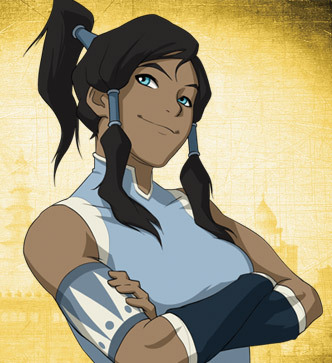
Korra’s the odd one out here, because it’s somewhat hard to gauge her privilege. She’s certainly been given special treatment, and it really doesn’t get luckier than being the Avatar, but she was also raised pretty much locked in a camp her whole life. Though she did get Naga, so she’s not allowed to complain. Let’s skip to Mako and Bolin.
Mako and Bolin are the orphaned sons of a Fire Bender and an Earth Bender. They are both highly talented in their respective elements. Mako is one of the small number of Fire Benders capable of creating lightning (though he’s apparently too cool to EVER use it during a battle). Bolin is also one of the best of the best in Earth Bending; both of the brothers being good enough to become pro-benders on the team the Fire Ferrets.
Yet despite these bending talents, Mako and Bolin are our introduction to poverty in Republic City. They struggled their whole lives, and even working as professional athletes, using their bending abilities, we see they’re barely scraping by. Clearly, based on what we’re told about Republic City, these two aren’t represented of the general socioeconomic trends. I accept that. But from a story telling perspective, they communicate a false impression to the audience.
Finally, Asami Sato, the only non-bender of the group, and thus supposedly the most statistically likely to face discrimination, abuse, or low socioeconomic status. And she’s filthy rich. Why do only rich people like her and Toph Bei-Fong have last names in the Avatar universe?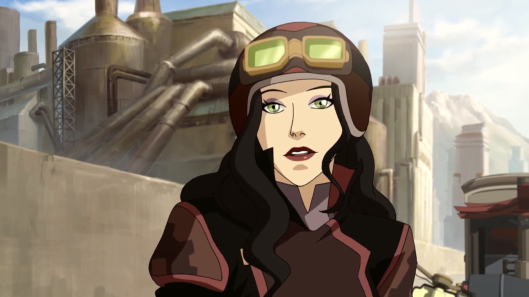
Asami’s father, Hiroshi Sato, founded the company Future Industries and invented the Satomobile (puns!) While probably outclassed by Varrick (another non-bender) in sheer affluence, Future Industries’ only competition in the consumer car market is Cabbage Corp, and they have a monopoly on taxis and robot tanks. For at least this season, Asami is shown to have a pretty much limitless well of cash.
The Legend of Korra isn’t really about social inequity, or the changes in worldview and politics brought on by new generations (season 2), or revolution and anarchism (season 3), or the geopolitical fuster cluck of a vacuum of power. These are all nice background details, and implore the audience to think deeply about this way beyond the grasp of you average Nickelodeon viewer, but Korra doesn’t attach any message onto them. In fact, here are all the messages in Avatar: bearded old men are good, good beats evil is better, and lesbians are best.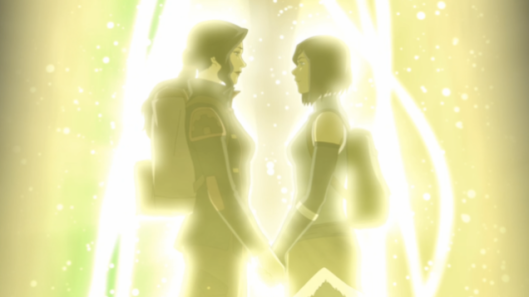
The bender to non-bender disparity of Republic city is just one of Avatar’s many wonderfully detailed bits of world building. The show is actually about the characters, their personal and independent struggles, and their relationships. No one watching cared much when Wu was instated as Earth King, ending Kuvira’s power grab, they cared when he took lessons from Mako and finally stood up as a leader. The best part of the Red Lotus wasn’t their ideal to realize John Lennon’s Imagine, but Zaheer’s interest in Air Nomad philosophy and spiritualism, and… I’d say their relationships, but those were kinda dull. While everyone can agree that Unalaq’s “Dark Avatar” thing was stupid, I still wholly believe that the Mako, Korra, Asami love triangle going on at that time was not stupid. And while Amon’s Equalist movement was interesting, it pales in comparison to the speedboat scene.
The Legend of Korra‘s best and most engaging moments don’t take place in the show’s political spotlight, but in the isolated personal lives of the characters. For me, Korra was at its best at three points. The aforementioned speedboat scene, which happens far off the coast of Republic City, with the Equalist movement already just a memory. The time spent in Zaofu, learning about the divergent pasts of the daughters of Toph Bei-Fong, with Kovira no where around. And the time spent in the Northern Air Temple, one of the most isolated places in the world of Avatar, where Bumi, Tenzin and Kya all let off a little steam over their childhoods and children of Aang. After that, when Korra finally arrived at the temple, she was surprised that Tenzin hadn’t heard about the Red Lotus yet. The Legend of Korra is at its best when it is far away from its politics.
Don’t Lose Your Way

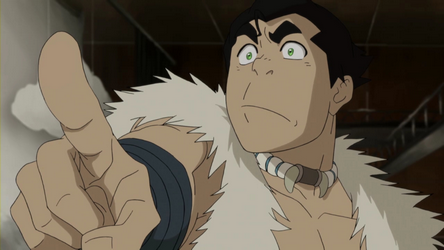
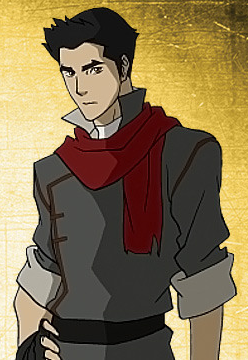
Found you on the Artifice…great post!
Hello! I nominated you for the Free Spirit Award (you can avoid it if you’re not responding these awards). You can check out my nomination post here: https://allthefujoshiunite.wordpress.com/2015/10/29/void/
Thank you for the nomination, and I’m sorry to read about what you’ve been going through. Also, I understand you are busy, so I’m sorry to further trouble you with my own ignorance, but what are these Awards?
While I’ve been on WordPress for what must be near two years now, I’ve never integrated with whatever community is here. I usually only log on when I have the time or need to share my own thoughts, and don’t read others’ work as often as I probably should.
Would I just write something similar to my normal work but themed around insanity, and include the Free Spirit Award image in the post?
Thank you again for the nomination, and I hope you are well.
Thank you, I’m doing okay! Yes, you can add the image, write whatever you want with the theme, and if you’d like you can nominate other blogs (then notify them) and give them a theme but this is not an obligation.
Thanks again for the kind words, hope to see you around!